ROYAL MILE TOUR |
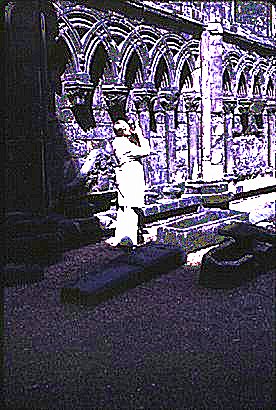 |
On July 17, our first conducted tours began from the bridge at the eastern end of Princes' Gardens, and we went to the ancient Holyrood Abbey where the Chapel Royal is still standing. Skies were overcast with frequent periods of drizzle. |
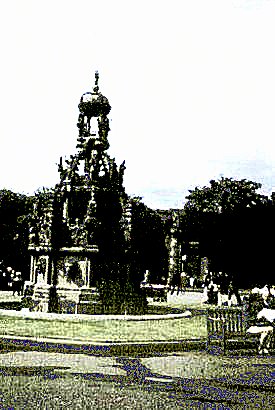 |
The grounds of Holyrood Abbey were spacious. |
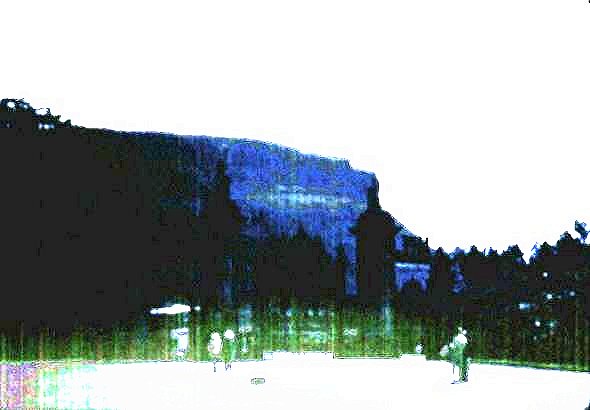 |
Under heavily overcast skies, we stood at the gate to the abbey grounds and took a picture of Arthur's Seat, which is the remnant of an extinct volcano. Since this photo was taken, architectural development in this area has included the Scottish Parliament Buildings, a museum and other buildings. |
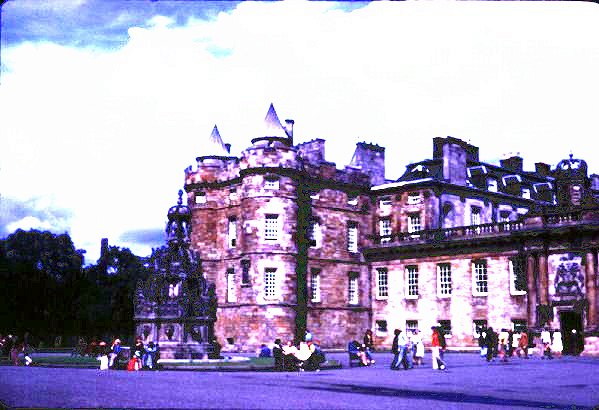 |
The rooms of Mary Queen of Scots are preserved in Holyrood Palace. Note the open windows in her wing of the palace. |
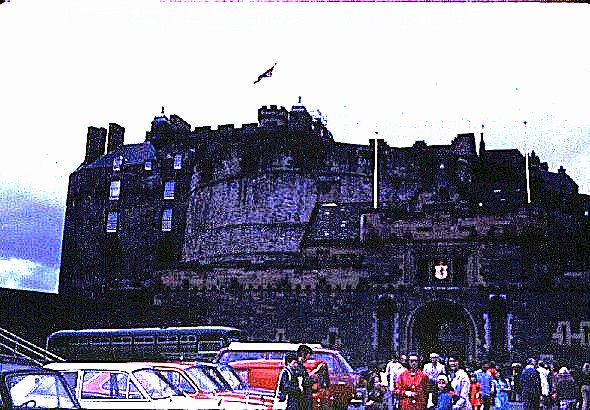 |
The Palace of Holyrood House at the eastern end of the Royal Mile, which links it to Edinburgh Castle at the western end. Holyrood Palace is the official Scottish royal residence in Edinburgh. |
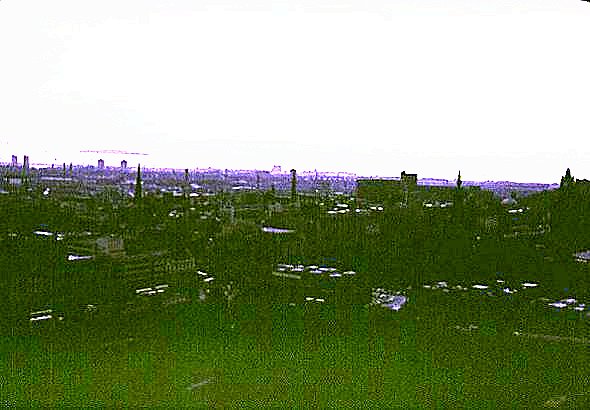 |
This is a view from the castle towards the Firth of Forth. |
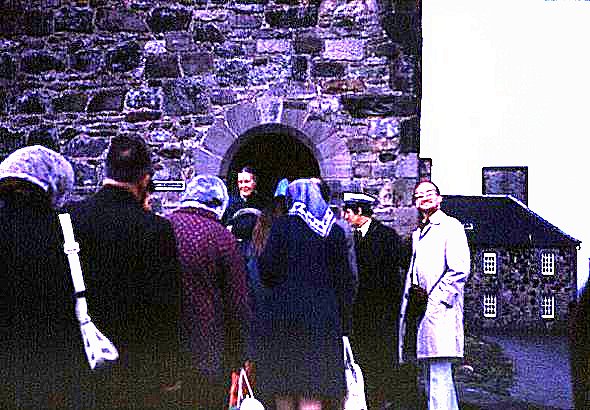 |
Pat managed to take my picture as we were awaiting a tour of St. Margaret's Chapel, the city's oldest surviving building. Malcolm III (1058-1093), nicknamed Canmore, built it for his Anglo-Saxon second wife who had been educated in Hungary's Roman Catholic institutions. |
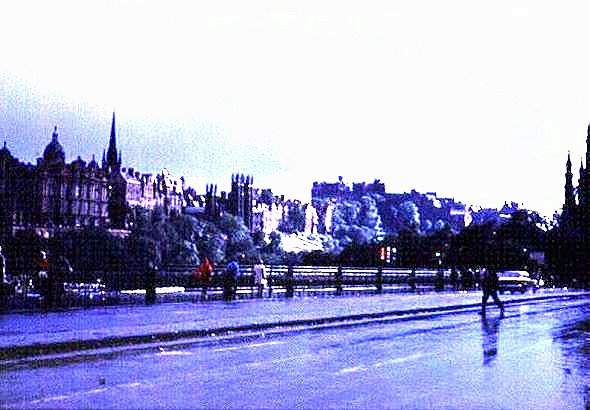 |
We stopped at the George IV Bridge and Princes Street for another view back towards the palace. |
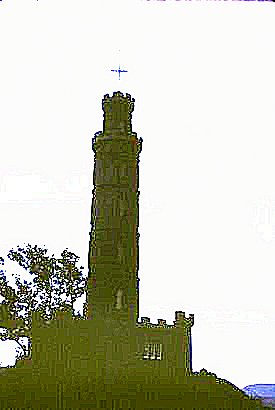 |
Nelson's Monument stands on Calton Hill. |
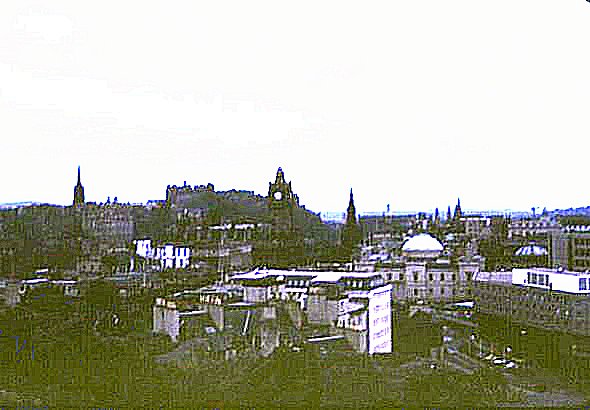 |
Here is a view from the monument on Calton Hill towards St. James Square ... |
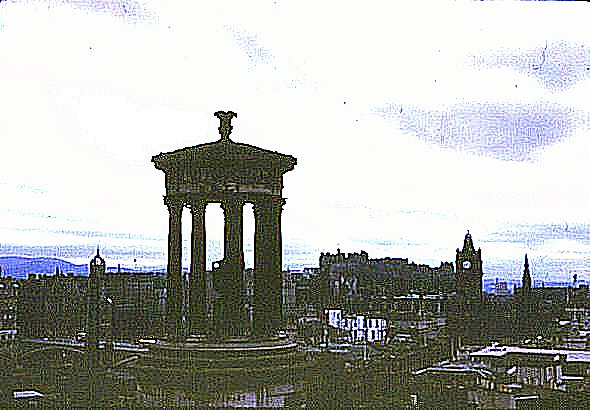 |
... and yet another view towards our next destination, St. Giles Cathedral. |
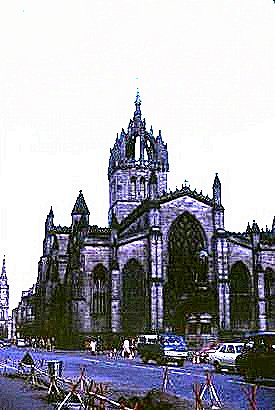 |
St. Giles Cathedral is regarded as the mother church of Presbyterianism after the reformation during 1559-1560 under John Knox. Scotland's Thistle Chapel is contained there for the knights of the Most Ancient and Most Noble Order of the Thistle. |
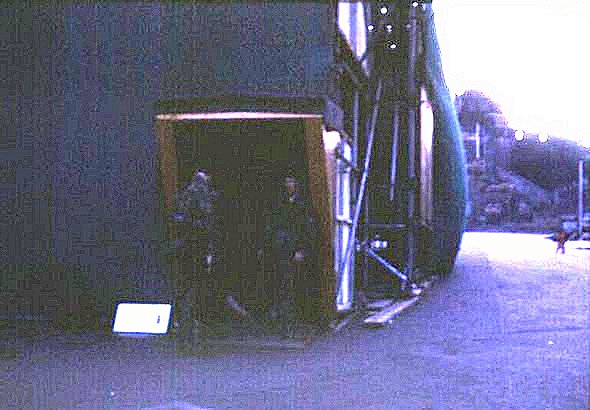 |
Edinburgh Castle was closed during our stay. British troops stand guard at the entrance on July 17, 1974. |